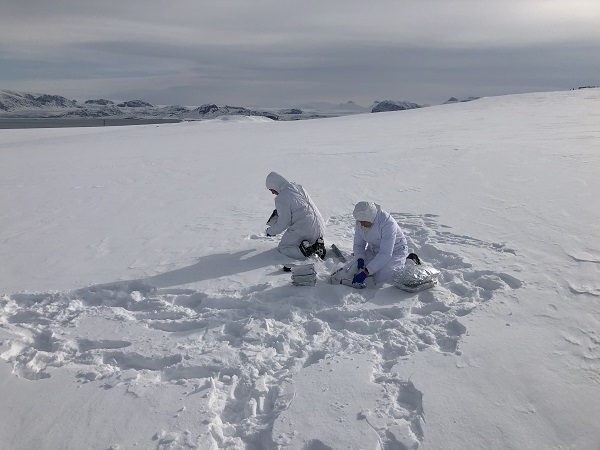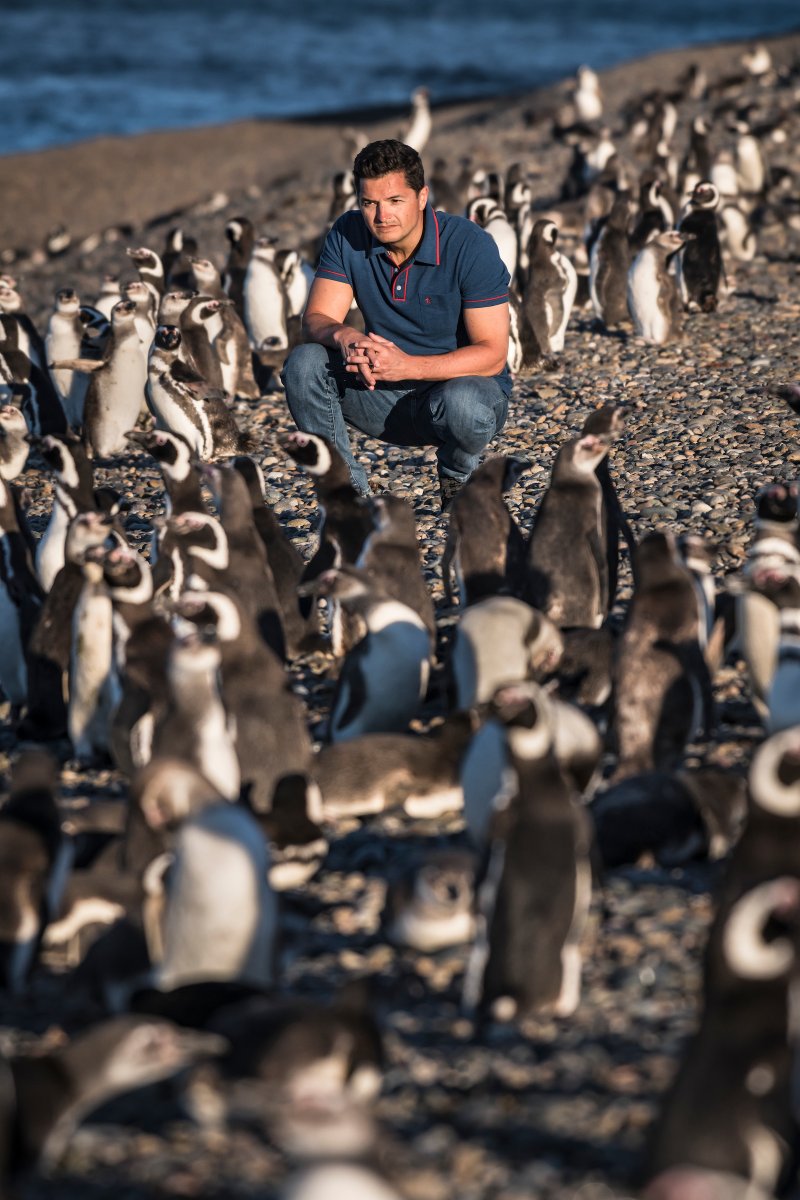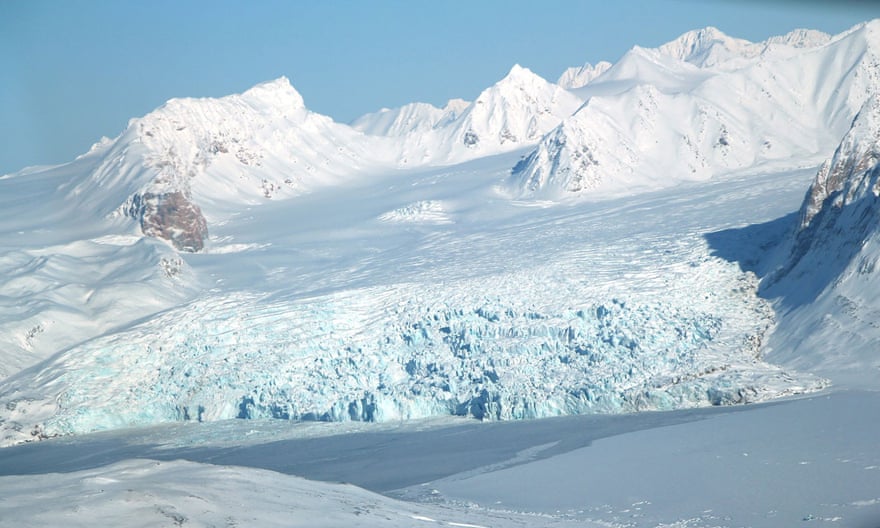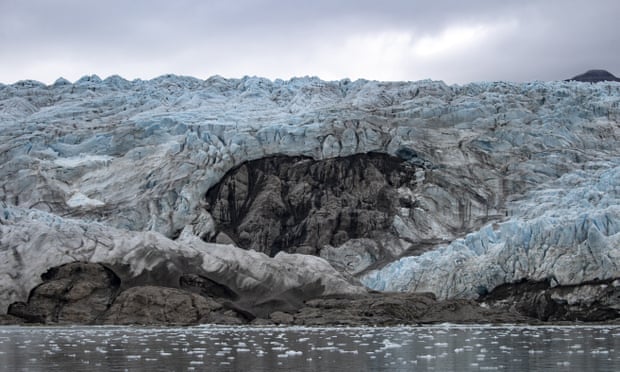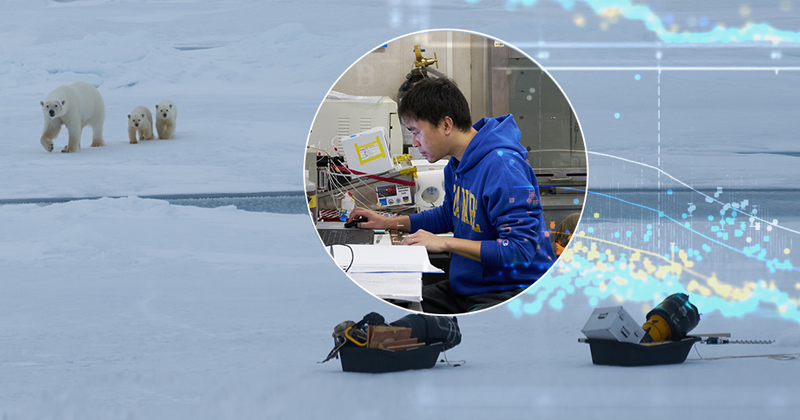Investigadores recolhem amostras de neve em Svalbard, Noruega.
credits: Federico Scoto, coautor do artigo abaixo descrito
A poluição não tem fronteiras. Ao Árctico já vhegam vestígios de componentes de protectores solares?!
Uma recente investigação vem reforçar isto, ao descobrir vestígios de componentes de protectores solares em amostras de neve recolhidas nos glaciares do arquipélago de Svalbard, no território da Noruega, na região do Árctico.
Num estudo divulgado na publicação online ‘Science of the Total Environment’, investigadores italianos e noruegueses revelam que esta é a primeira vez que contaminantes como octocrileno, oxibenzona, metoxicinamato de octilo e outros agentes usados em produtos para proteção da pele da radiação solar são encontrados em neve nessa região do planeta.
Marco Vecchiato, investigador da Universidade Ca’Foscari, em Veneza, e um dos principais autores do artigo, explica que a detecção de "contaminantes emergentes” – compostos químicos cuja presença no ambiente não tinha no passado sido considerada e que podem ser prejudiciais para a saúde humana e ambiental – em áreas remotas da Terra pode ser atribuída ao transporte atmosférico.
O cientista afirma, em comunicado, que as maiores concentrações desses químicos foram encontradas em neve depositada durante o Inverno árctico, apontando que "no final do inverno, as massas de ar contaminadas da Eurásia alcançam o Ártico mais facilmente."
Explica ainda que, por serem usados sobretudo em produtos de cuidado pessoal para minimizar os danos causados à pele pelos raios ultravioleta emitidos pelo Sol, "esses contaminantes só podem vir de regiões continentais habitadas a menores latitudes."
“Em Svalbard, durante a noite c, o Sol não nasce e os protectores solares não são usados”
Marco Vecchiato
Os cientistas acreditam que esta investigação será importante para a criação e implementação de programas de monitorização da poluição do Árctico e para “a protecção do ecossistema local”, uma vez que outros estudos já revelaram que a presença desses contaminantes em ambientes aquáticos pode causar alterações endócrinas e hormonais potencialmente prejudiciais aos organismos.
Numa altura em que o aumento da temperatura média do planeta Terra está a subir de ano para ano, é expectável que esses químicos, agora depositados em massas geladas, acabem por ser arrastados para o mar com as águas do degelo, impactando as formas de vida e ecossistemas que vivem nas águas gélidas do Árctico, onde as alterações climáticas estão a acontecer quatro vezes mais rapidamente do que em qualquer outra região do planeta.
in Chemicals of Emerging Arctic Concern in north-western Spitsbergen snow (mini resumo)
Nota: Leiam o artigo completo (open source)
https://www.sciencedirect.com/science/article/pii/S0048969723070298?via%3Dihub
We report a preliminary study on the spatial and seasonal distribution of 13 ingredients commonly found in personal care products, including fragrance materials, UV filters, BHT and BPA. Possible sources and deposition processes are discussed.
The environmental matrix in which these chemicals are more likely to be found may vary depending on the environmental conditions of the deposition area and the specific chemical properties of the compounds
https://www.sciencedirect.com/science/article/
Conclusions:
These results obtained from this study reveal that CEACs are present in the snowpack near Ny-Ålesund and in glaciers up to 40 km away from the village. For some chemicals investigated, this is the first report of their occurrence in snow samples in the Arctic environment. The implications are crucial if we consider that the annual snow cover is a temporary reservoir for chemicals, and they are re-emitted into the environment in a relatively short time during the melting season.
(...)
in Chemicals of Emerging Arctic Concern in north-western Spitsbergen snow (excerpts)
Note: Read the entire article (open source) :
https://www.sciencedirect.com/science/article/pii/S0048969723070298?via%3Dihub
Geração polar
02.01.2024
sources: Greensavers/ Journal Science of the Total Environment (open source)
